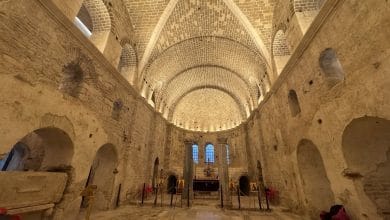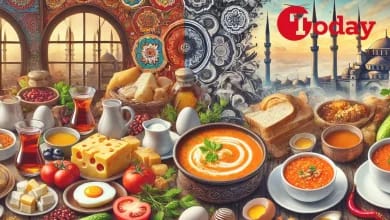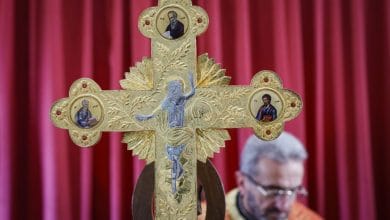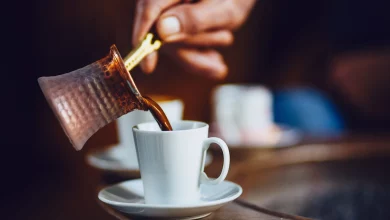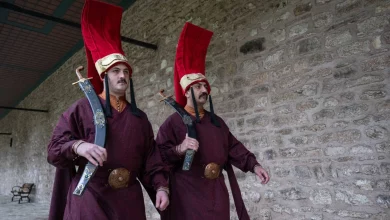The Heritage and History of Baklava
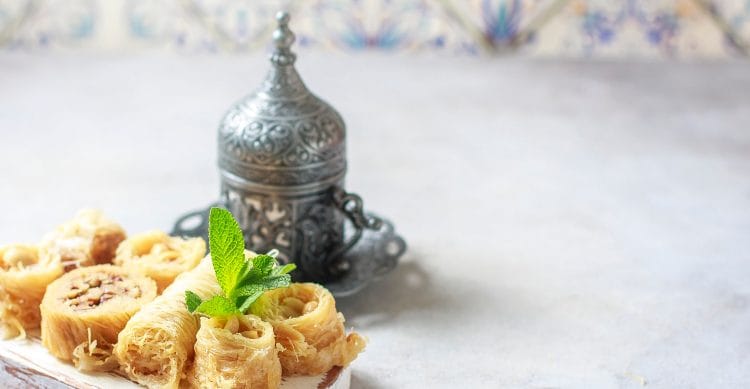
Legend has it the Assyrians had been preparing baklava as early as the 8th century B.C. by layering unleavened flat bread with chopped nuts in between, drenching it in honey, and then baking it in primitive wood-burning ovens.
It is claimed the baklava we consume today was perfected during the Ottoman Empire in the 15th century after invading Constantinople (present day Istanbul). For over 500 years the kitchens of the Imperial Ottoman Palace became the culinary hub of the empire.
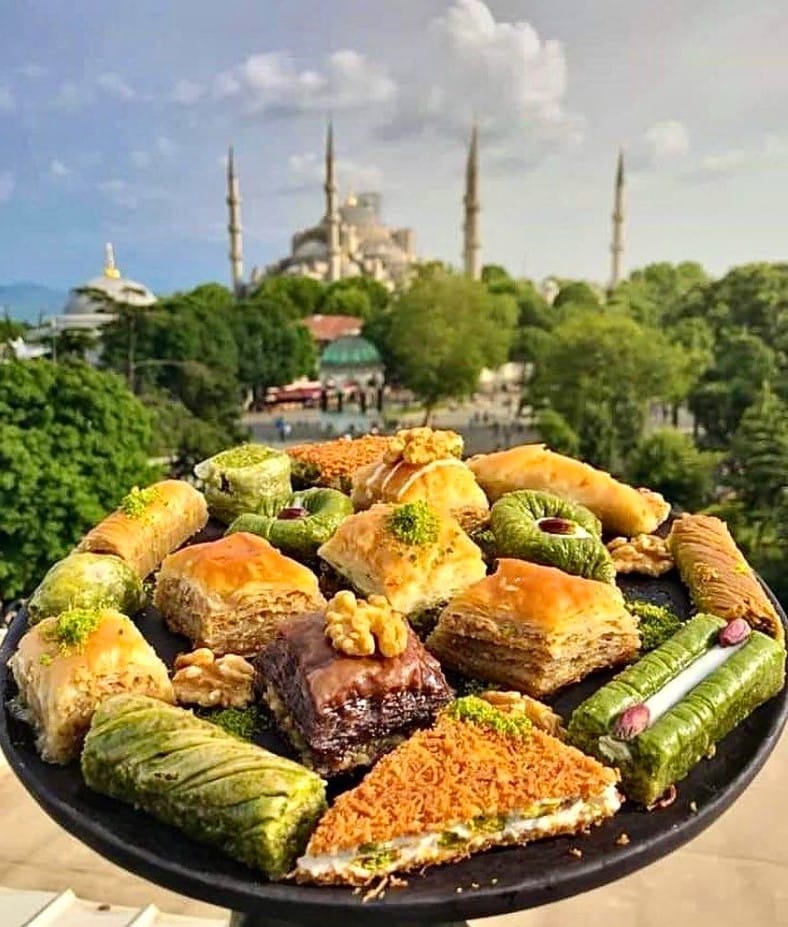
The oldest reports about baklava are present in Topkapı Palace kitchen notebooks from the Fatih period. According to this report baklava was baked in the Palace in 1473. Baklava elaborated from a simple pastry into a luxurious dessert.
Till the 19th century baklava was thought-of as a luxury; which only the very wealthy could afford. People would bake baklava only on special occasions, and religious events or wedding.
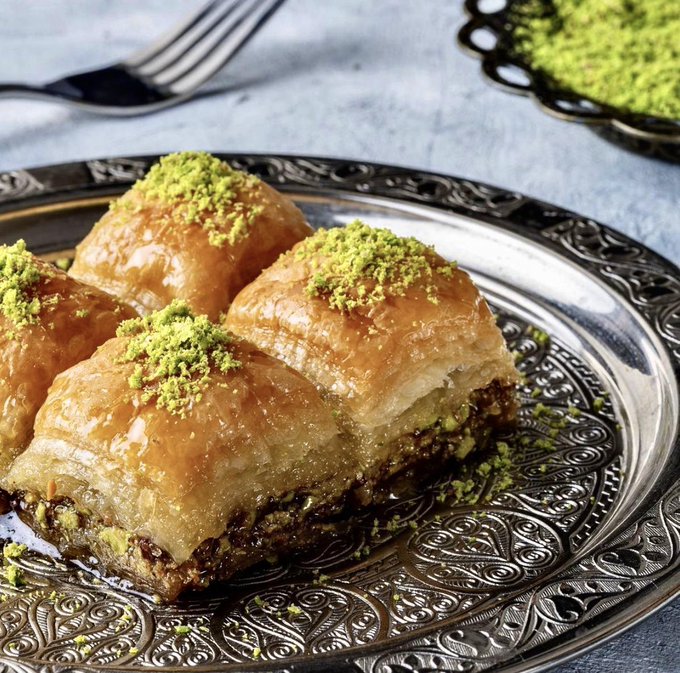
Traditional Arabic dessert with pistachios
Although the exact baklava origins remain divisive; it is an undeniable certainty that baklava was enhanced by changes & influences in The Middle East or Near East – each of them modifying baklava to their preference.
Just like there is difference of opinion over baklava origins, the source of the word baklava is also disputed. The word baklava entered the English language in 1650, a borrowing from Ottoman Turkish.
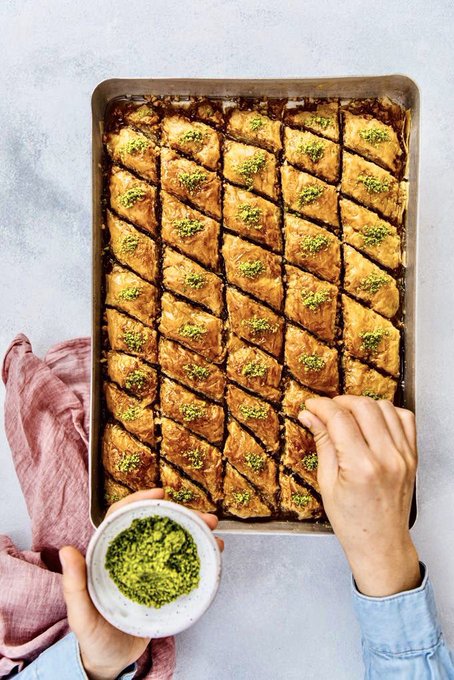
Baklava is popular across the Middle East but also in other countries and cultures preparing it with different variations. Here are Baklava variations across the Muslim world.
In Afghanistan and Cyprus, baklava is prepared into triangle-shaped pieces and is lightly covered in crushed pistachio nuts. In Armenia, baklava is made with cinnamon and cloves. Azerbaijan, baklava – also known as pakhlava is cut into diamond shapes and each piece is garnished with an almond or a walnut.
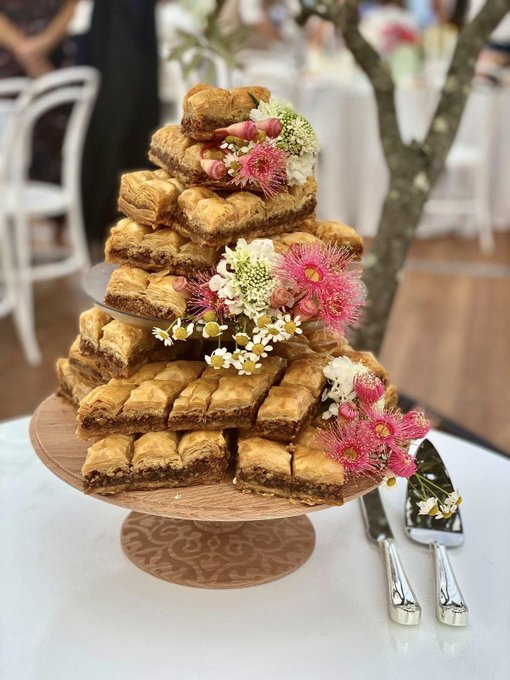
In Albania, baklava is a very popular dessert. The dough may include egg yolks, and the filling uses walnuts. In Algeria baklawa is usually the center piece of any sweets table in most Algerian regions. Although it is originally from the Middle East, the Algerian Baklawa is unique because the filo dough is not used.
In the Balkans, it is one of the most popular desserts; though, it is also a dessert made on special occasions (by Muslims, mostly during the holy month of Ramadan and Eid El-Fitr)
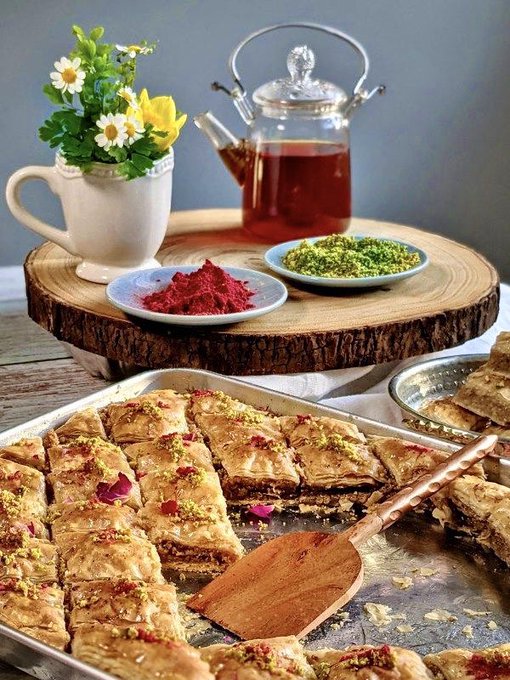
In Bulgaria, baklava is a very popular dessert as well. It is usually made with walnuts and honey syrup, and pistachio is also available.
In Egypt baklava is made from special thin, rectangular sheets of dough called goulash. It is usually stuffed with walnuts or pistachios and sweetened with honey.
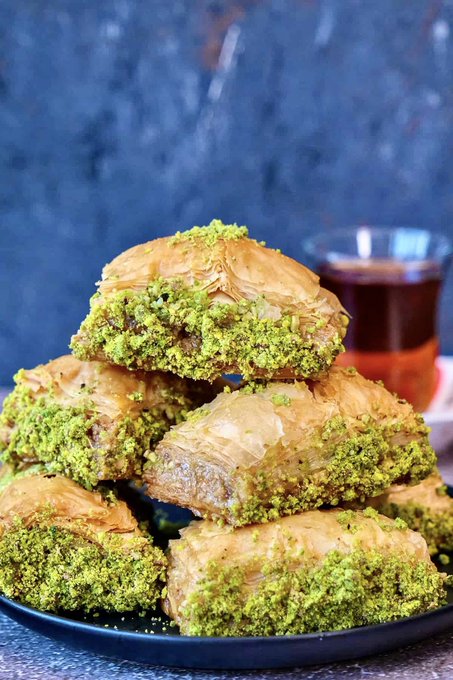
In Greece, baklava is traditionally made with 33 layers of flaky phyllo pastry filled with crushed nuts and sweetened with honey syrup.
In Iran, a drier version of baklava is cooked & presented in diamond-shaped cuts flavored with rose water. Persian baklava uses a combination of chopped almonds & pistachios spiced with cardamom & a rose water syrup & is lighter than Middle Eastern versions.
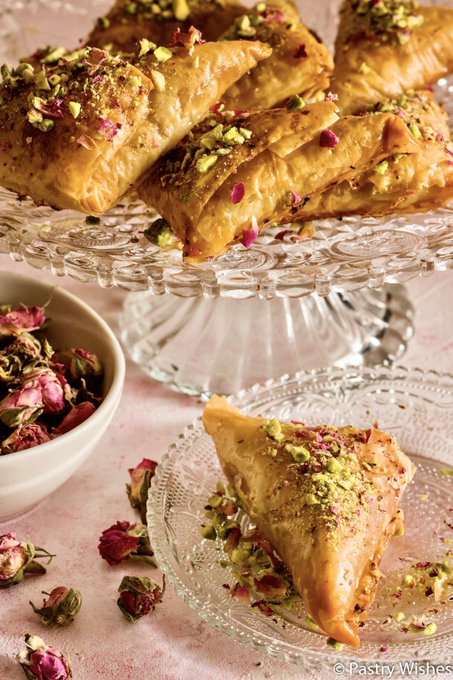
In Jordan, baklava is made of dough layers filled with nuts, such as pistachios, and sugar or honey syrup. In Lebanon, baklava is made of phyllo dough sheets filled with nuts (pistachios, walnut, cashews, pine nuts, almonds) & steeped in “Atir” (ka-tr) sugar syrup with orange blossom water & rose water. It is cut into triangular rectangular, diamond or square shapes.
In Syria, baklava is prepared from phyllo dough sheets, butter, walnuts and sugar syrup. It is cut into lozenge pieces. Baklava from Aleppo is made with the local pistachios and “samna” from Hama.
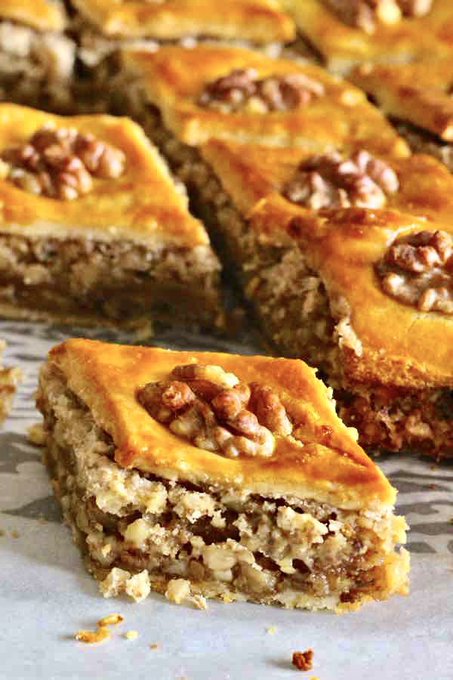
In Turkey, baklava traditionally is made by filling between the layers of dough with pistachios, walnuts, almonds (parts of the Aegean Region) or a special preparation called “kaymak” (not to confuse with kaymak).
In many parts of Turkey, baklava is often topped with kaymak or, in the summer, filled with ice cream (milk cream flavour, called “kaymaklı dondurma”) Today you can get many variations and new flavours of baklava, including the very popular chocolate baklava.
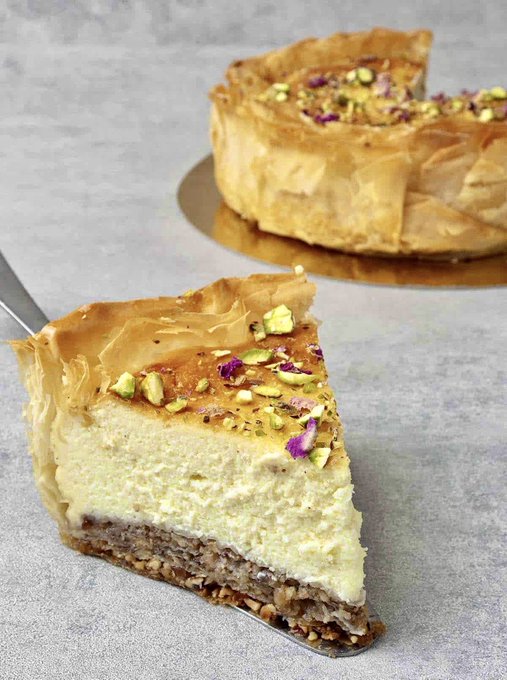
There are also lots of popular variations of fusion baklava recipes, including baklava cheesecake and baklava flavoured ice cream.

